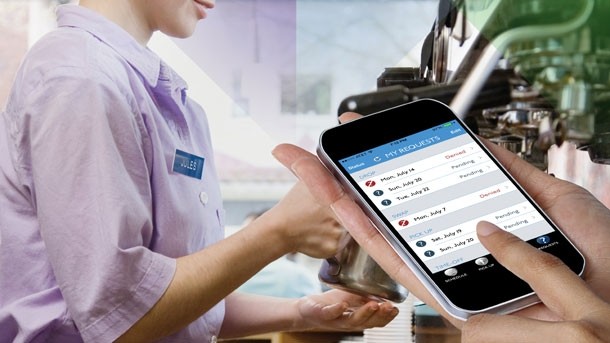Back-of-house technology: Staff management without the spreadsheet

With unpredictable revenue streams, complicated shift patterns and a high turnover of casual staff, hospitality faces some unique challenges when it comes to rotas, payroll and staff management.
However, Adrian Burns, managing director of Verteda, says the industry has been one of the slowest to adopt the increasingly sophisticated HR and workforce management technology on offer.
“People for many years have run pieces of paper and excel spreadsheets and wasted a lot of management time trying to fill slots for rotas within hospitality outlets, and the majority of people still do it that way,” he says.
“And yet we have tech at our fingertips that everyone can use now that allows a much slicker operation to be put in place.
“We certainly wish that hospitality businesses would look around them and take up what other businesses have already done for a long while.”
Labour productivity
So what can technology offer when it comes to staff management?
According to James England, director of sales and marketing at Fourth Hospitality, the biggest recent developments have been around labour productivity and workforce optimisation.
“Labour productivity is massive right now, and revenue prediction is half the battle – it all starts out with good healthy revenue predictions,” he says.
Workforce management software can help operators predict revenues accurately by combining historical revenue data with weather forecasts.
“Human beings are quite predictable, and by combining historical data with revenue you can get quite an accurate prediction of what you might take on any given day,” says England.
Operators can then programme in the hourly tasks needed to service their business, and work out the right staffing levels to achieve efficiency and keep costs in line with revenues.
“In simple terms, workforce management systems allow managers to think, plan and consider each hour of the day, rather than relying on the traditional daily or weekly schedule,” England explains.
“There are massive upsides to the staff because you are not squeezing them dry, and it is better for business because you are optimising the revenue potential and eliminating costs related to staff wastage.”
Once a business has established what staff they need, workforce management software can also be used to automate the rota process, saving significant management time.
“Operators can programme in a forecast and let the system decide how it is going to fill those job slots based on roles, responsibilities and a number of other criteria,” says Burns.
“Staff can make themselves available for job slots online or through an app, and if they are assigned to a slot they will be sent a text message or email asking them if they are available, and they simply have to tick yes or no.”
Some workforce management systems also allow staff to swap shifts without the manager getting involved, saving even more management time and empowering employees to take control of their own rotas.
Time and attendance
Another big development in hospitality HR technology has been the increased focus on time and attendance.
“It was only a couple of years ago that people in hospitality businesses were saying that we don’t have the right culture for time and attendance, and we trust our staff,” says England.
“But that is all nonsense now – even the smallest family firm is happy to have people clock in and clock out.”
Time and attendance systems can be seamlessly integrated with workforce management and payroll systems – resulting in an automated system which guarantees staff are paid correctly for the hours they work.
When it comes to payroll, technology means that payslips can now be generated electronically, replacing paper payslips which required management time to replace if they got lost.
“Staff can now be given their own portal into the system,” says England. “They can view historical payslips if they need to go for a mortgage or something, and they can request holidays online and view their holiday balances.”
Online training
Although most HR and workforce systems are now fully integrated, with scheduling optimisation, time and attendance and payroll all provided in one package, training can require a more bespoke approach.
“Online training is becoming more popular, we can see that online training is massively on the up,” says England. “While there is an argument to get as much as you can on one system, there are times when you need a best of breed system, and training is an example of that.”
With so many online training modules now available, the key is to finding one that meets your needs but also integrates with your existing systems.
“It’s important when you do have more than one system in place that they talk to each other and you avoid having to enter any piece of data more than once,” says England.
Streamline
With so many benefits to an integrated HR and workforce management system, is it time to ditch the spreadsheets? Burns believes it is, and warns that hospitality risks losing ground to manufacturing and retail industries if it does not get on board soon.
“This is a manufacturing process- we are delivering food and hospitality to people, but it is still goods coming in at one end and people playing money and walking out at the other,” he says. “We should definitely be streamlining it a lot more.”

























